Prev ….. Next
CASTOR-V/21 spent fuel cask
The next load of the CASTOR-V/21 fuel cask [1] is considered below:
- 10 spent $15 \times 15$ PWR fuel assemblies of 3.11 wt.% initial enrichment, 35.7 GWd/MTU burn-up, and 46 months cooling time;
- 7 quadratic combined absorbers which consist of two coaxial polyethylene and lead prizms of inradius 7 cm and 10.5 cm respectively;
- 4 empty positions.
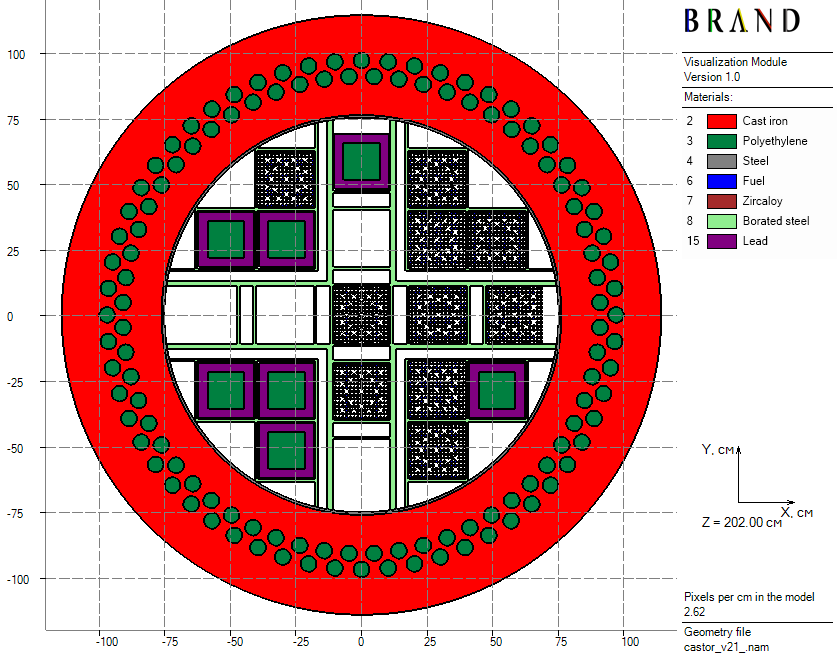 |
| Figure 1: Horizontal cross-section of the loaded cask |
Computed flux functional - ambient equivalent dose H*(10) [2] rates.
Several computations cases results are provided:
- Single cask (total running time - 13.5 hours);
- Additional calculation for the single cask side surface primary gamma dose rates distribution (total running time - 25.2 hours);
- The cask is located in the center of $10^5$ cm air sphere inside a hypothetical labyrinth-like absorbing either polyethylene or lead construction which is designed for domination of the skyshine effect in radiation transfer (total running time - 12.6 hours);
- The same as above model but construction has an air-filled perforation of 100 cm radius on 2500 cm height above the cask bottom (total running time - 12.7 hours).
Below, results of neutron-gamma and gamma problems computations are performed.
Neutron results
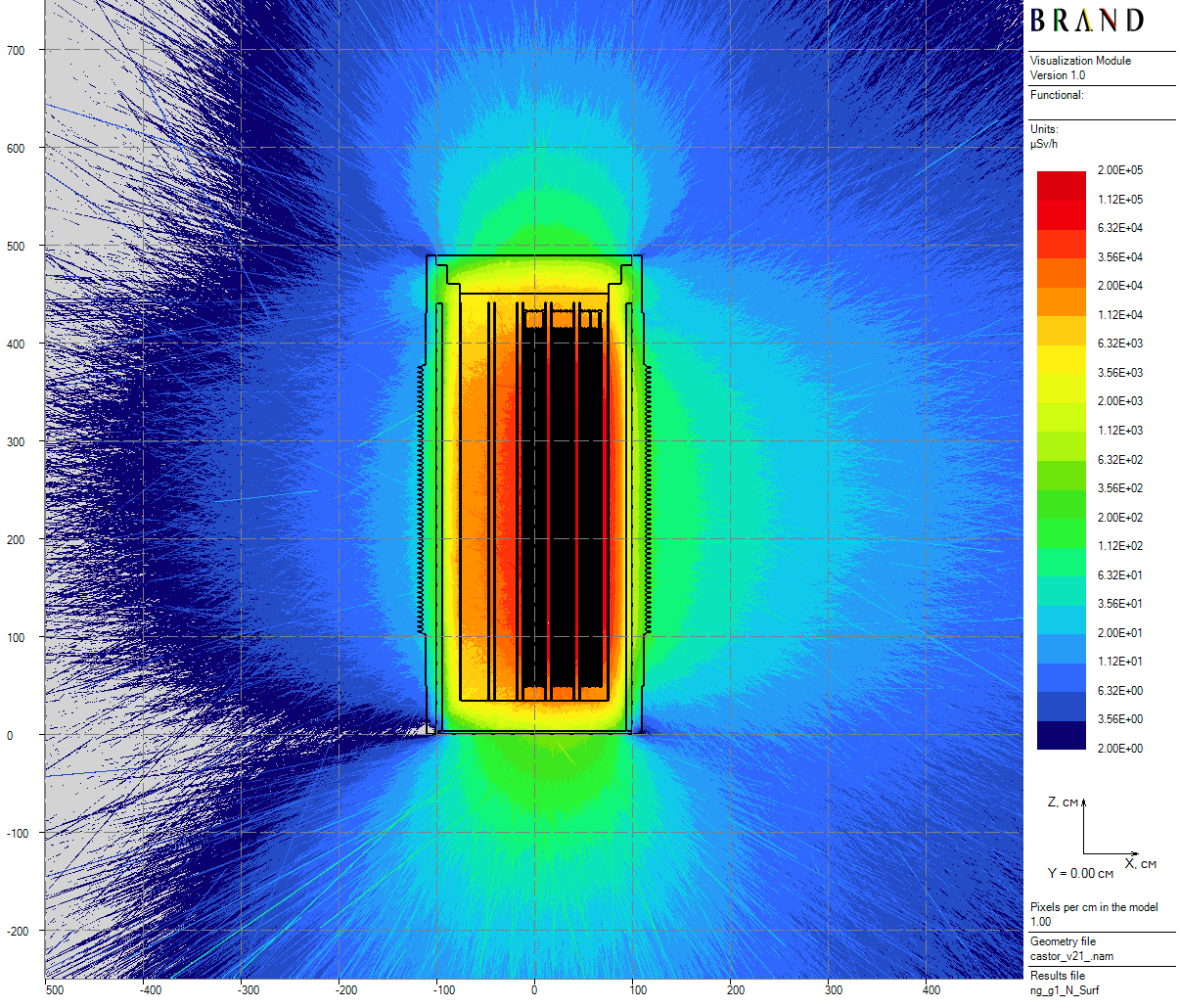 |
| Figure 2: Neutron axial dose rates distribution for a single cask (20 cm thick) |
 |
| Figure 3: Neutron vertical dose rates distribution for a cask in the skyshine model (20 cm thick) |
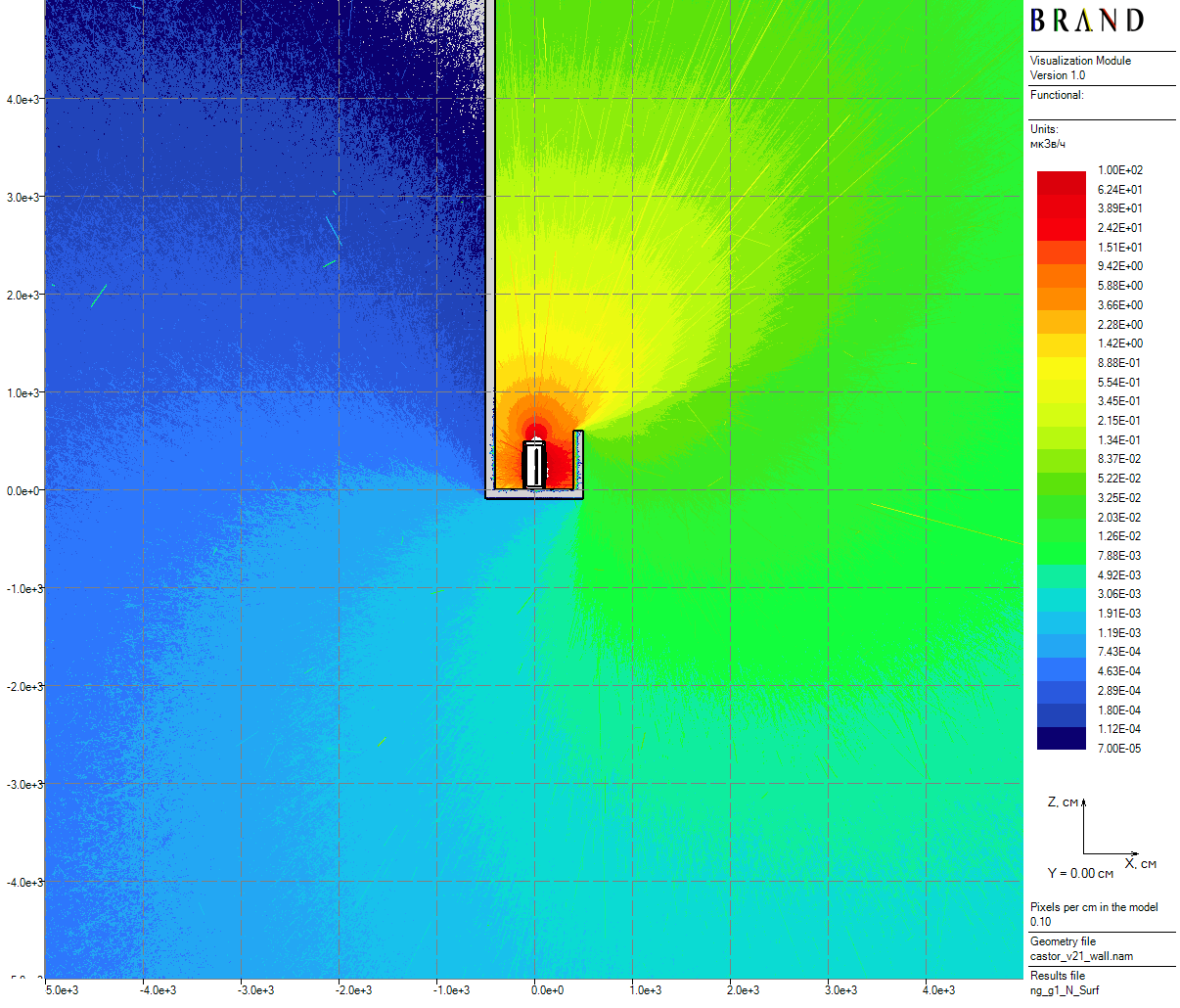 |
| Figure 4: Neutron vertical dose rates distribution for a cask in the skyshine model (100 cm thick) |
 |
| Figure 5: Neutron vertical dose rates for a cask in the skyshine model with a perforation (100 cm thick) |
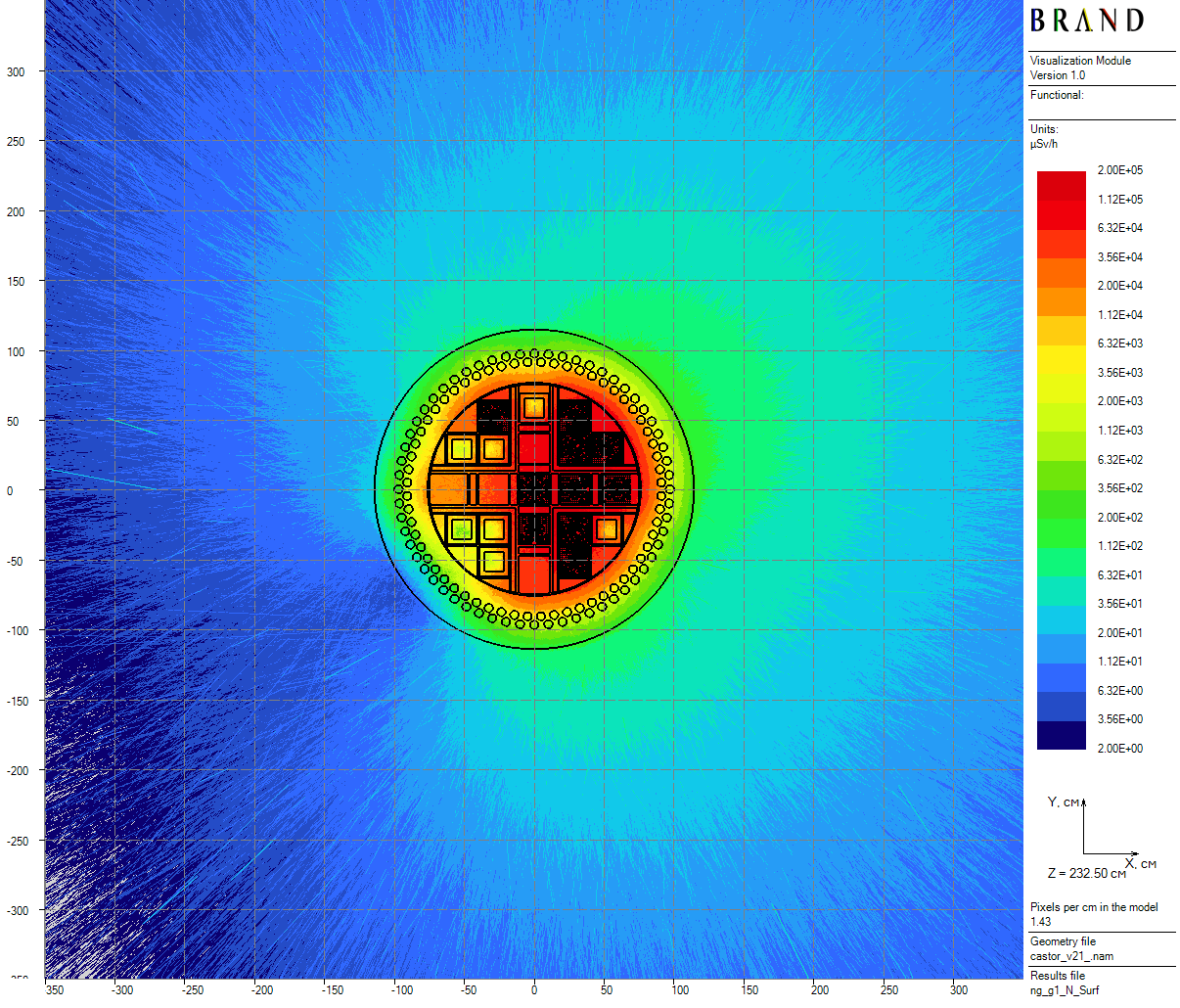 |
| Figure 6: Neutron azimuthal dose rates for a single cask (20 cm thick) |
 |
| Figure 7: Neutron horizontal dose rates for a cask in the skyshine model (50 cm thick) |
Primary gamma results
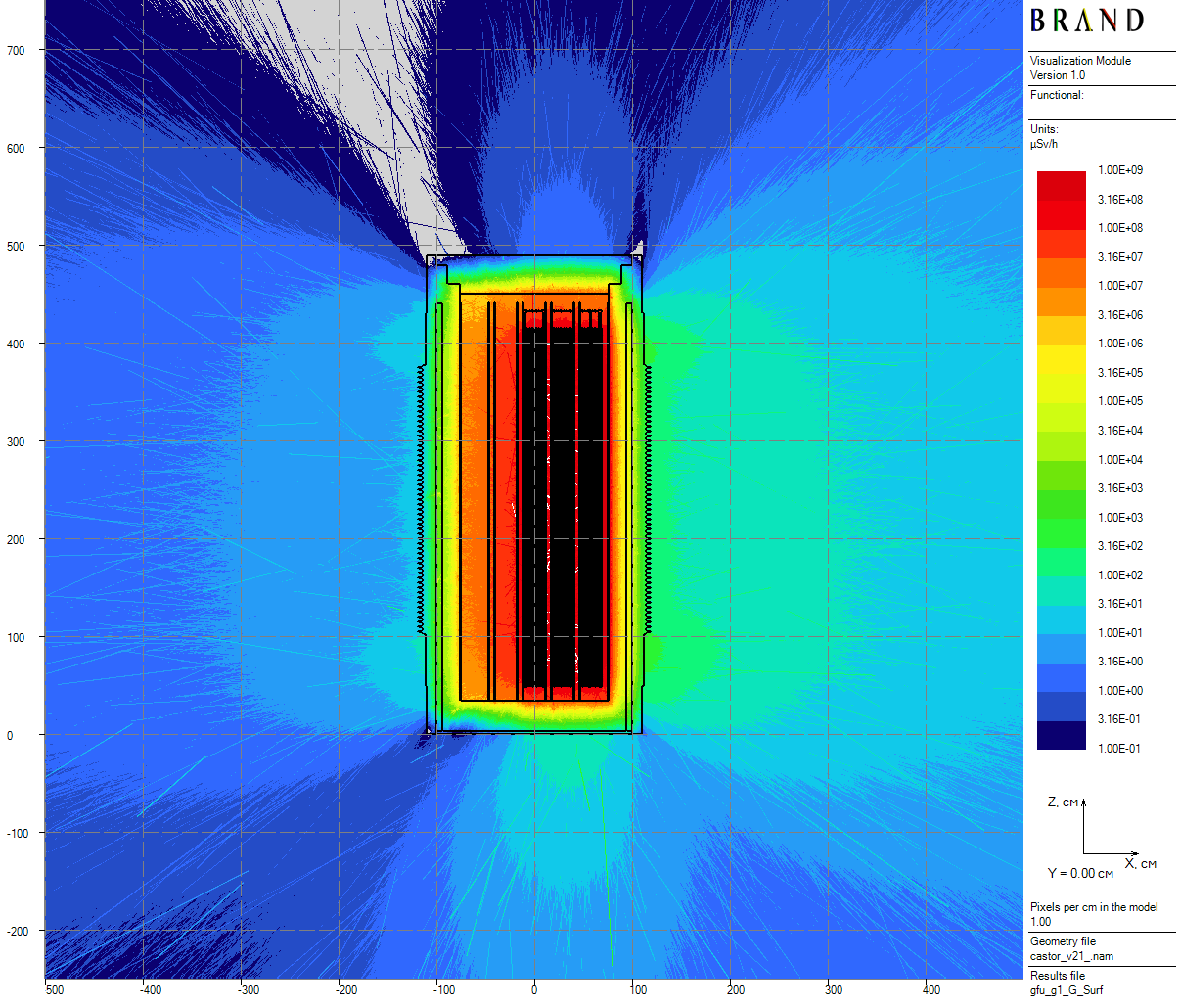 |
| Figure 8: Primary gamma axial dose rates for a single cask (20 cm thick) |
 |
| Figure 9: Primary gamma vertical dose rates for a cask in the skyshine model (20 cm thick) |
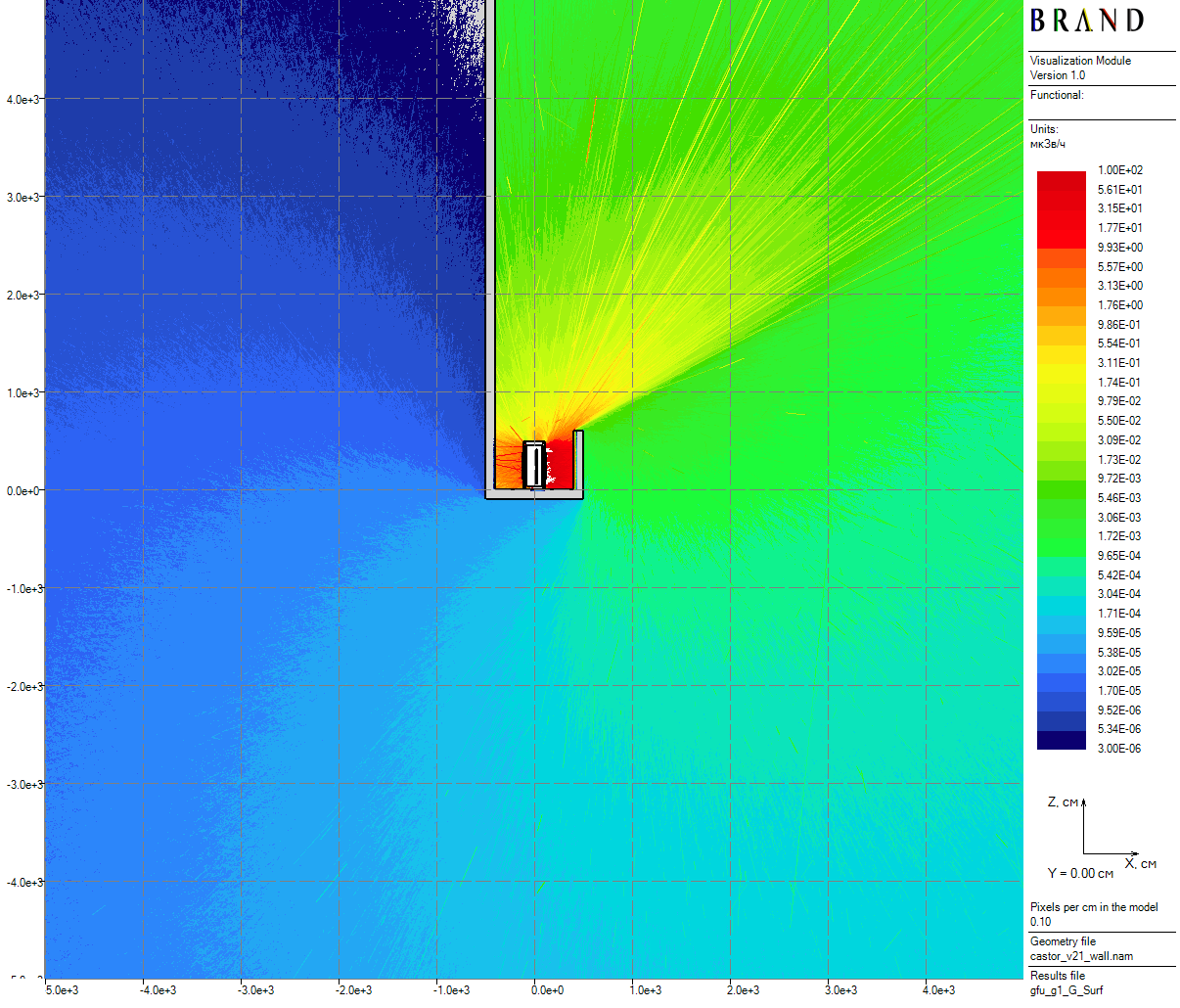 |
| Figure 10: Primary gamma vertical dose rates for a cask in the skyshine model (100 cm thick) |
 |
| Figure 11: Primary gamma vertical dose rates for a cask in the skyshine model with a perforation (100 cm thick) |
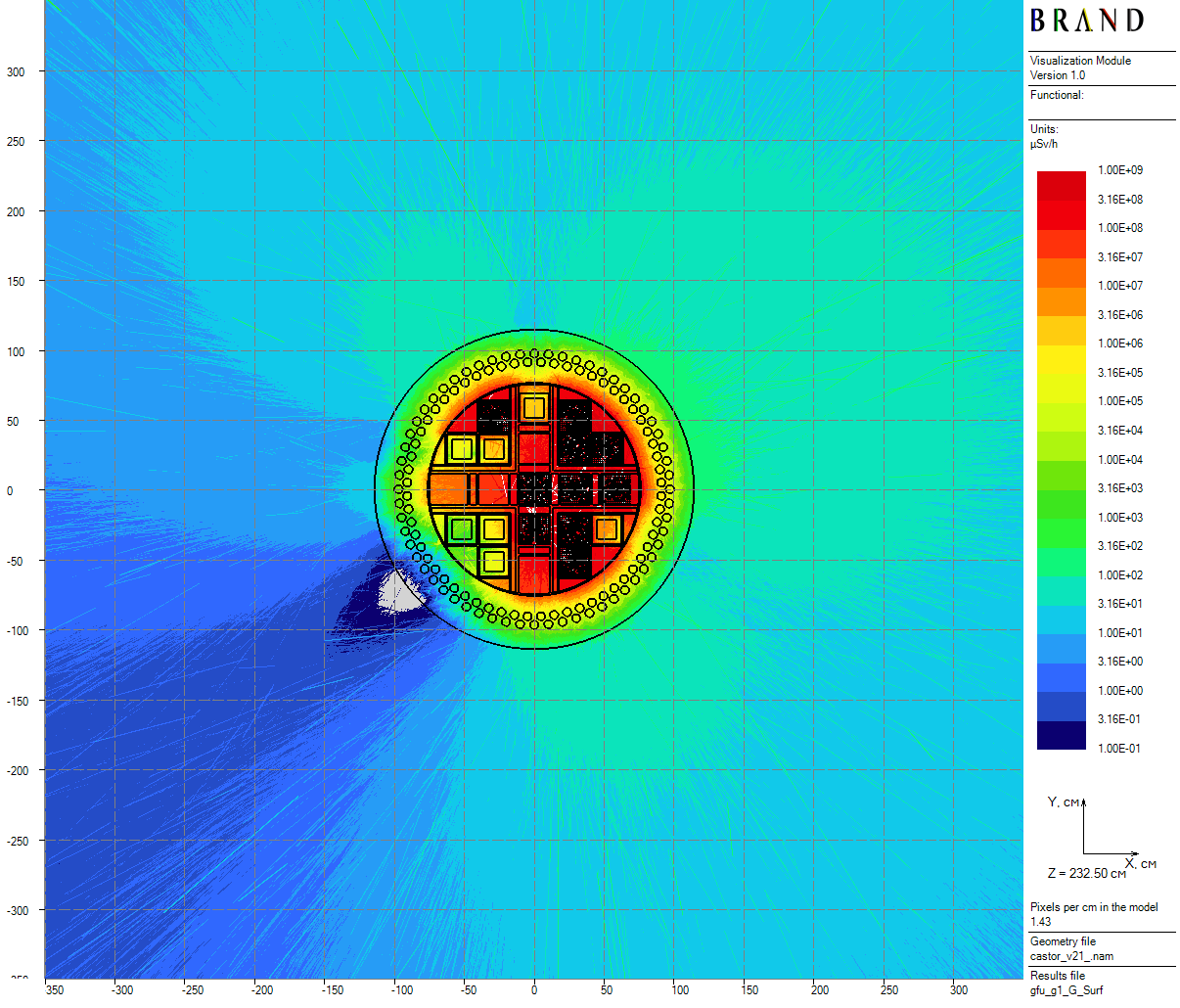 |
| Figure 12: Primary gamma azimuthal dose rates for a single cask (20 cm thick) |
 |
| Figure 13: Primary gamma horizontal dose rates for a cask in the skyshine model (50 cm thick) |
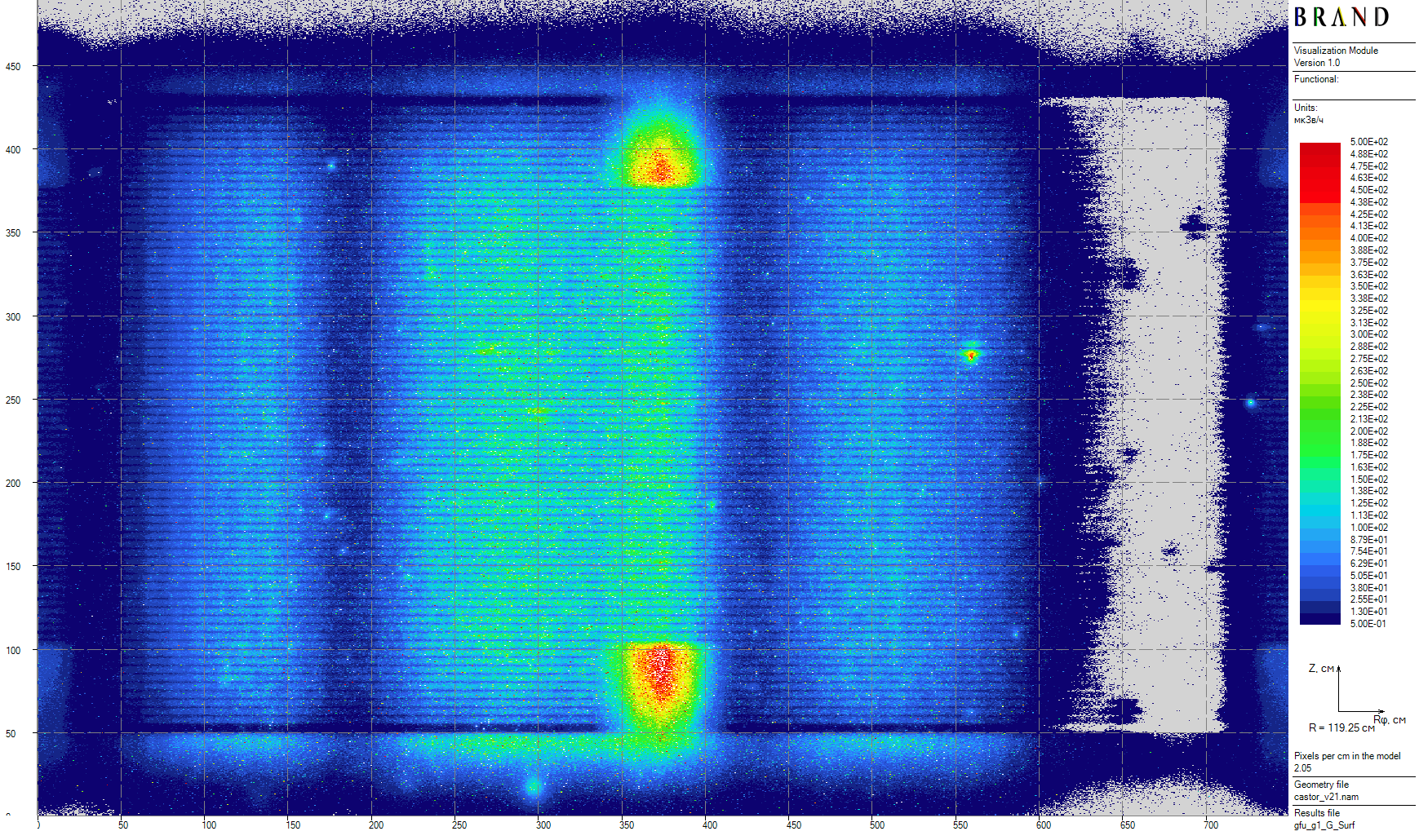 |
| Figure 14: Primary gamma side surface dose rates for a single cask (the extended calculation for 25.2 hours) |
Prev ….. Next
References
- B.L. Broadhead, J.S. Tang, R.L. Childs, C.V. Parks, and H. Taniuchi. Evaluation of shielding
analysis methods in spent fuel cask environments.
- International Commission on Radiological Protection., International Commission on Radiation Units,
and Measurements. Conversion coefficients for use in radiological protection against external radiation.
Annals of the ICRP ; v. 26, no. 3/4. Published for the Commission by Pergamon Press, Oxford ;, 1st
ed. edition, 1996 - 1997.
Copyright © 2025 Vitaly Mogulian













